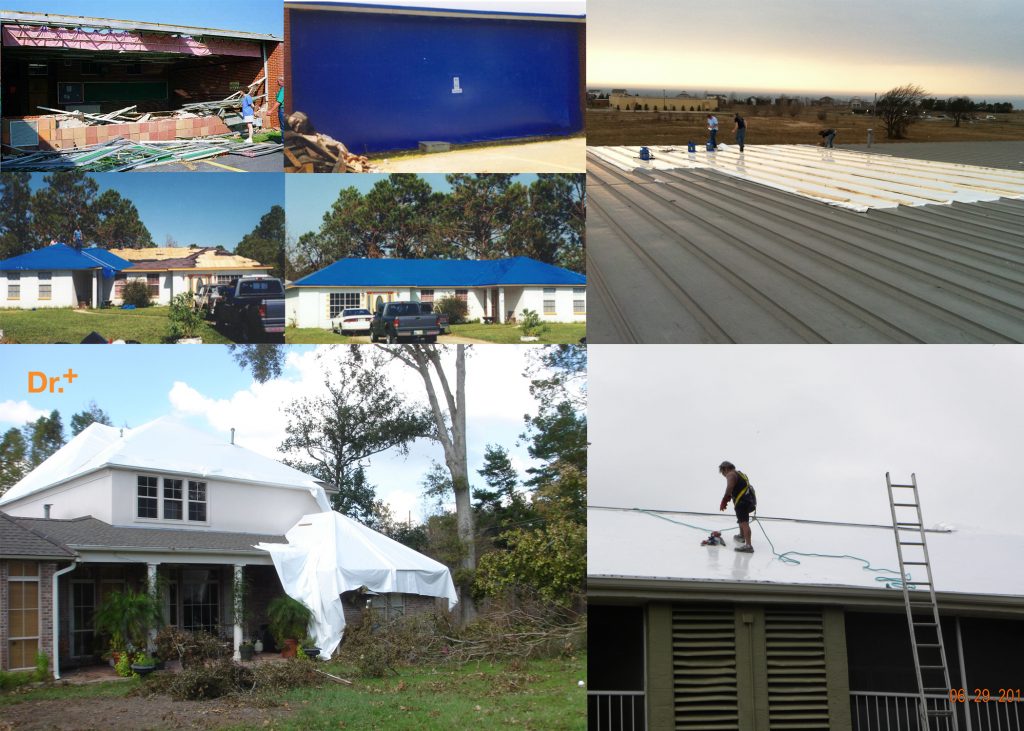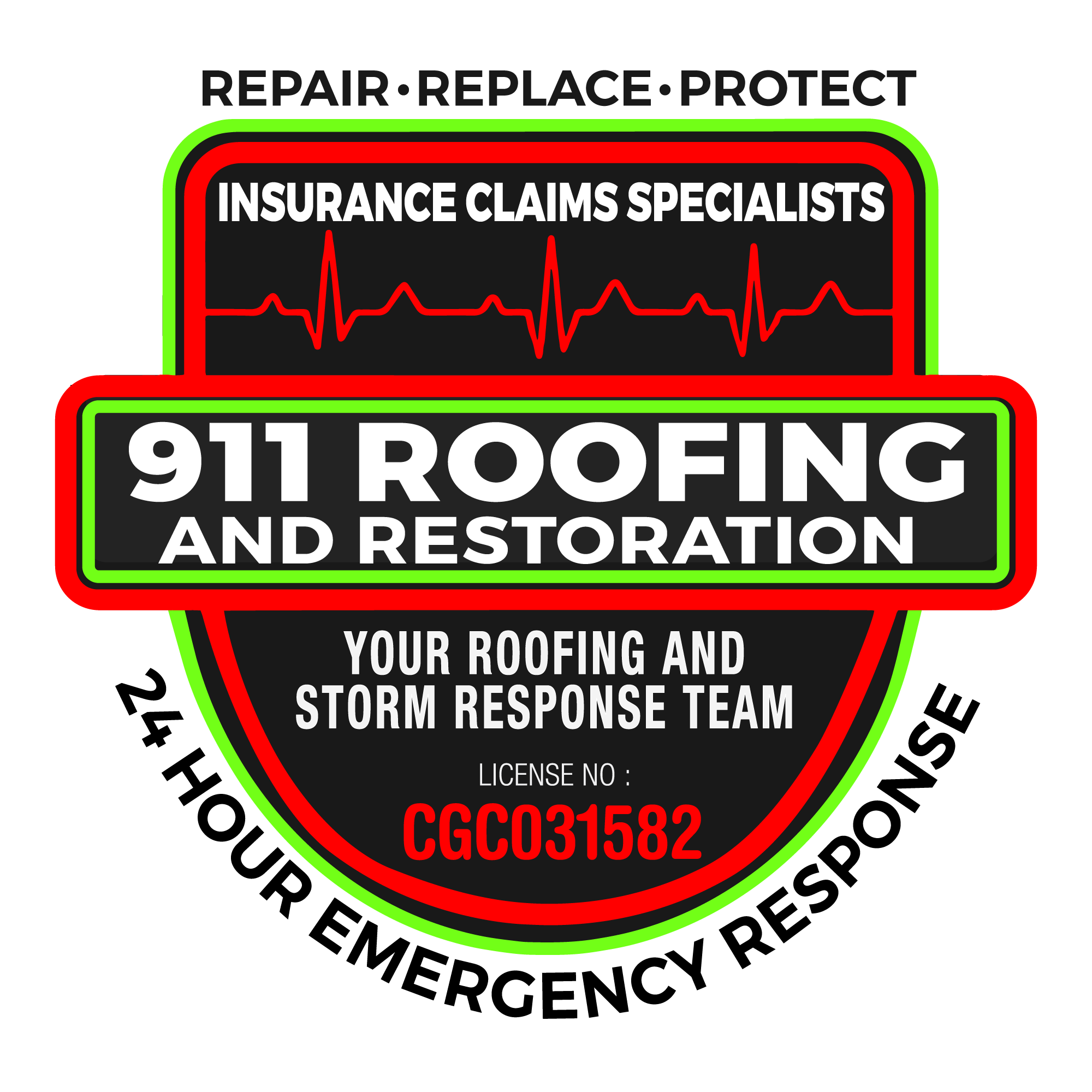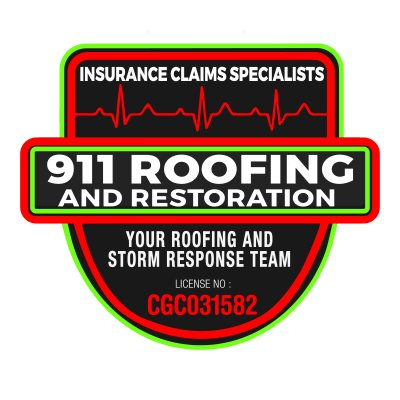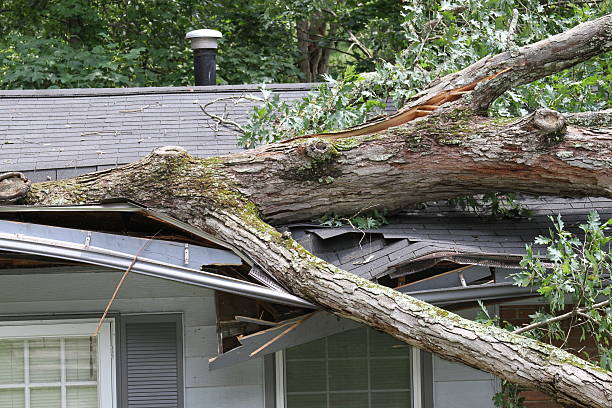Imagine that your roof was hit by a storm or damaged by high winds or falls. When experiencing roof damage, you may wonder what the process for receiving compensation from your insurance company is like. You want to take your time getting a claim form filled out; even worse, you need to ensure that the process is fast and smooth.
The information below should help you understand certain aspects of the roof insurance claim process or answer any questions about it.
Tell me the insurance process for roof damage.
The first line of defense against the weather is your roof. Your roof’s biggest enemy is undoubtedly the wind. Still, it also faces threats from electrical fires, fallen branches, heavy snowfall, moisture intrusions, and damage from rodents like squirrels that can get into your attic and establish a home.
Insurance companies are stringent when it comes to insuring you and, at the same time, keeping their risk minimal.
Getting a policy is impossible if the roof is old and worn out. Insurance companies consider roofs one of the most critical aspects of insurable properties.
Buying or renewing a policy may only be possible if your roof is 15 or 20 years old. This article assumes you have coverage and now have to make a claim.
Roof Insurance Claims Process: What to know about it
A thorough understanding of the roof repair process before you need it will ensure you are well prepared to act should any roof damage occur to your home.
The process of fixing or replacing a roof involves a lot of people, such as insurance adjusters, contractors, mortgage lenders, and sometimes even the government! Operations like this can be stressful.
When it comes to filing an insurance claim for storm damage, hiring an experienced contractor will be a great help.
Here’s everything you need to know about the roof insurance claim process so that some of that stress is mitigated and you can quickly begin fixing a problem when one finally occurs:
How old is your roof?
Identifying a roof’s age might take a lot of work. Depending on the type of shingles used and how they were installed, every roof ages differently and at a different rate. The most straightforward and accurate approach to determine the age of a roof is to find out when it was last changed, which may require getting in touch with the previous owner or the roof’s manufacturer.
Most roofing professionals predict a roof’s life span is between 25 and 30 years. Insurance companies sometimes don’t pay for replacements, which can be a mistake.
In other words, just because your roof is old does not make it eligible for insurance. Wind or hail damage can be more difficult to repair on an older roof than on a newer one.
Why?
Replacement of a damaged shingle requires peeling back the shingles around it to insert the new one.
The flexibility of older shingles makes them impossible to peel back, implying that the surrounding shingles will eventually fracture and fail themselves for every replacement shingle.
A repair that will result in more damage to the house is not something that your insurance will cover. Therefore, replacing the entire roof is the only option to repair the damage.
It is certainly possible to repair a younger roof with the same level of damage without harming the current shingles. An insurance claim is most likely not worthwhile in the situation.
Types of insurance coverage for roofs
Roofing is a significant investment for your home or business. You want the best coverage possible and need to know what type of roofing coverage you have.
Roofs come in many different types of materials, including asphalt shingles, clay tiles, slate tiles, metal roofing, and more.
Each material has pros and cons that can affect your roof’s lifespan and overall value. For example, metal roofs are strong and durable but can cost more than other options. When choosing the suitable material for their home or business, homeowners must also consider whether they want insurable interest coverage on their property because insurance policies cannot cover certain risks alone.
Roof insurance can be divided into the following categories:
What is ACV(Actual Cash Value):
The concept of “actual cash value” is tricky. Some legal authorities say the phrase refers to “fair market value.” However, the majority of courts have accepted the traditional definition used by the insurance sector, which is the price to replace an item with a new one of like quality and kind, minus depreciation.
What is RCV(Replacement Cost Value)
The cost to replace damaged property with one of like type and quality, without taking into account depreciation, is often described or detailed in the policy under the heading “replacement cost value.” This value is indicated to restore the insured to their pre-loss condition to replace the current market condition.
An illustration of the roles that ACV and RCV play.
Consider a scenario where a tree damages your roof after falling and hitting your home. You have a replacement cost value coverage, and the age of your roof is ten years. Your insurance provider is obligated to cover the damaged goods’ cost and restore your “wholeness.” When they provide you with an initial check for the ACV (Actual Cash Value) to replace the damaged roof, they will take the age of your roof into consideration. Your insurance provider will release
the depreciation they withheld initially if you engage a contractor and repair the roof, and the check will enable you to get the full RCV (Replacement Cost Value) of your damaged roof.
What is the extent of your roof damage?
Determining how severely a storm has damaged your roof might be challenging.
Even those highly skeptical about having their roof insured are taken aback when their claim is accepted.
Because of this, it’s crucial to have a skilled roof inspector assess your roof and provide you with the data you need to decide whether you should submit a claim.
A thorough roof inspection will find issues, such as wrinkled shingles, wind damage, or broken shingles, that you might not be able to detect from the ground.
The roofing company you hired can help your claim approval process
After a storm, you need the best roofing help you can get. Experts in storm damage remediation can bring your roof back to peak condition and protect your home.
You wouldn’t choose a roofer you knew couldn’t do the job. Likewise, you would only pick one whose roof your insurance covers repair.
Wouldn’t it be nice to have someone on your side as you go through the insurance claim process? That’s where 911 roofing and restoration, Inc comes in.
911 roofing and restoration, Inc has helped hundreds of residents in the Florida area with their insurance claims. Our goal is to ensure that all our customers have a positive experience during an incredibly stressful time. Our primary concern is your needs, not those of the insurance company.
CONCLUSION
If you have an experienced contractor, you can save thousands of dollars on your roof insurance claim. However, resources are available to help you understand your options and how to achieve the best possible outcome for your damaged roof.
At 911 Roofing and Restoration Inc – having completed thousands of storm restoration projects;
- Our team knows what insurance companies look for.
- We provide the documentation they want.
- Our public adjuster partners negotiate on your behalf.
- And we’ll help you through the entire process.

Whether it’s wind damage caused by a storm or hurricane, water damage, fallen trees, fire damage, or another disaster, You will want a team like 911 Roofing and Restoration, Inc on your side to help you get the best results during your restoration project.



